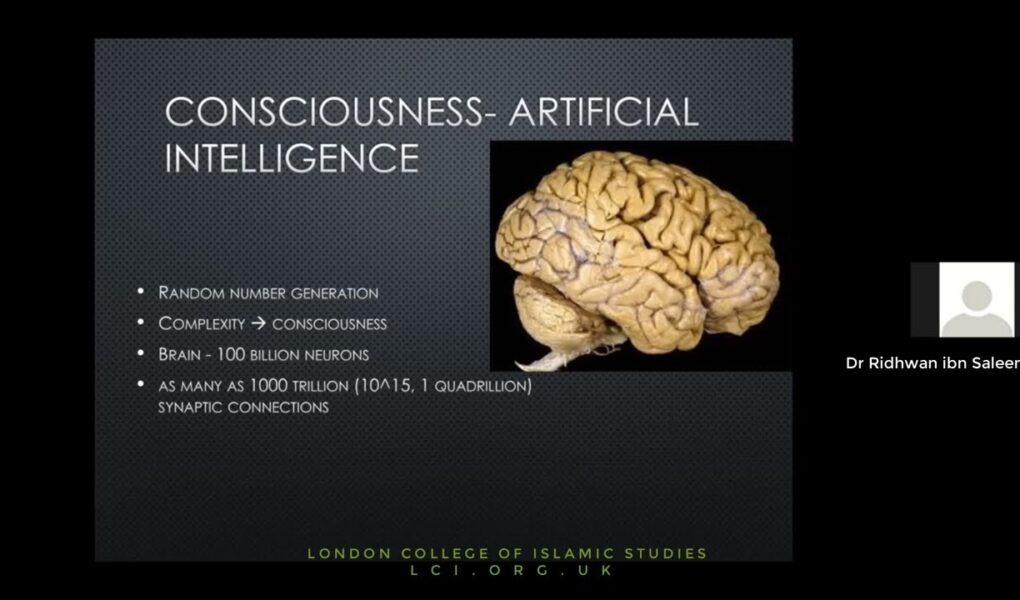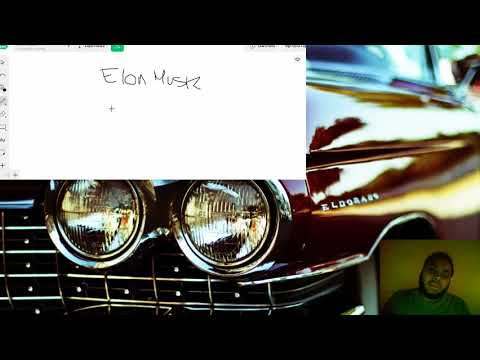Ha Meem Foundation
Table of Contents:
00:00 – Introduction
00:34 – Aqeedah and contemporary issues
01:44 – What is consciousness?
02:52 – Thought experiment – random number
06:51 – Consciousness as a function of complexit
y
07:51 – The human brain vs AI
10:48 – AI and self awareness
15:29 – Consciousness, Soul, Psyche & Mind
21:58 – Quantum theory & Schrodinger’s Cat
35:59 – The Double slit experiment
46:00 – Quantum entanglement
50:09 – Ghazali on consciousness
52:58 – The Ultimate Observor & the Multiverse
55:04 – Questions & Comments
Dr Ridhwan outimes how the study of topics such as consciousness, complexity theory, and quantum theory are vital to formulating a contemporary Islamic theology, and how physicists are today’s theologians for many people.
Source




السلام عليكم ورحمة الله وبركاته
جَزَاكَ ٱللَّٰهُ خَيْرًا
Very interesting. On the double split experiment, I've heard that the sneeky trying to observe which slit the atom takes alters the experiment. Observation requires an input or alteration in the energy of the atoms being observed, changing the outcome.
It's becoming clear that with all the brain and consciousness theories out there, the proof will be in the pudding. By this I mean, can any particular theory be used to create a human adult level conscious machine. My bet is on the late Gerald Edelman's Extended Theory of Neuronal Group Selection. The lead group in robotics based on this theory is the Neurorobotics Lab at UC at Irvine. Dr. Edelman distinguished between primary consciousness, which came first in evolution, and that humans share with other conscious animals, and higher order consciousness, which came to only humans with the acquisition of language. A machine with primary consciousness will probably have to come first.
What I find special about the TNGS is the Darwin series of automata created at the Neurosciences Institute by Dr. Edelman and his colleagues in the 1990's and 2000's. These machines perform in the real world, not in a restricted simulated world, and display convincing physical behavior indicative of higher psychological functions necessary for consciousness, such as perceptual categorization, memory, and learning. They are based on realistic models of the parts of the biological brain that the theory claims subserve these functions. The extended TNGS allows for the emergence of consciousness based only on further evolutionary development of the brain areas responsible for these functions, in a parsimonious way. No other research I've encountered is anywhere near as convincing.
I post because on almost every video and article about the brain and consciousness that I encounter, the attitude seems to be that we still know next to nothing about how the brain and consciousness work; that there's lots of data but no unifying theory. I believe the extended TNGS is that theory. My motivation is to keep that theory in front of the public. And obviously, I consider it the route to a truly conscious machine, primary and higher-order.
My advice to people who want to create a conscious machine is to seriously ground themselves in the extended TNGS and the Darwin automata first, and proceed from there, by applying to Jeff Krichmar's lab at UC Irvine, possibly. Dr. Edelman's roadmap to a conscious machine is at https://arxiv.org/abs/2105.10461